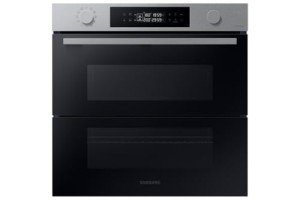Buzzwords De-Buzzed: 10 Different Ways Of Saying Builtin Oven

The Comprehensive Guide to Built-In Ovens: Features, Benefits, and FAQs
Built-in ovens are a popular option for modern kitchens, providing flexibility, efficiency, and a streamlined design that integrates effortlessly into cabinets. This short article will explore the various elements of built-in ovens, including their features, benefits, installation options, maintenance pointers, and responses to frequently asked concerns.
What is a Built-In Oven?
A built-in oven is designed to be set up within kitchen cabinetry and is available in numerous setups, such as single or double ovens. Unlike freestanding Read A lot more , built-in models supply a streamlined look and provide more versatility in kitchen style. They come in electric, gas, and steam choices, catering to a variety of cooking preferences.
Features of Built-In Ovens
Built-in ovens are loaded with functions that enhance cooking experiences. Here are some of the most typical features to consider:
| Feature | Description |
|---|---|
| Self-Cleaning | Many models consist of a self-cleaning function that burns residue at high temperatures, simplifying upkeep. |
| Convection Cooking | This feature utilizes a fan to flow hot air, cooking food more uniformly and rapidly. |
| Smart Technology | Some ovens come geared up with Wi-Fi connection, permitting users to manage the oven remotely via mobile phone. |
| Several Cooking Modes | Include options such as baking, broiling, roasting, and air frying, offering flexibility for various dishes. |
| Temperature Probe | Keeps track of the internal temperature of food, guaranteeing perfectly prepared meals whenever. |
| Streamlined Design Options | Readily available in numerous surfaces (stainless steel, black, white) to match kitchen decor. |
Benefits of Built-In Ovens
The installation of a built-in oven brings numerous advantages to any kitchen:
- Space Efficiency: Built-in ovens take full advantage of kitchen area, providing a tidy and orderly appearance without compromising performance.
- Boosted Cooking Performance: With sophisticated functions like convection cooking and accurate temperature level controls, built-in ovens typically surpass traditional designs.
- Design Flexibility: These ovens can be set up at eye level, permitting simple gain access to without bending down, which can be especially advantageous for individuals with physical restrictions.
- Improved Resale Value: A well-designed kitchen with premium built-in appliances may attract potential buyers, improving general residential or commercial property worth.
- Customization Options: Many brands offer personalized designs that fit the specific measurements and visual of private kitchens.
Installation Options
When choosing a built-in oven, understanding the setup alternatives is crucial. Here are the most typical configurations:
- Single Built-In Oven: Ideal for smaller sized kitchen areas, these units provide adequate space to prepare a range of meals concurrently, best for daily cooking.
- Double Built-In Oven: Best fit for passionate cooks and large households, double ovens permit synchronised cooking at 2 various temperature levels, ideal for meals that need diverse cooking approaches.
- Mix Steam and Oven: A hybrid solution that combines the advantages of traditional baking with steam cooking. This option is excellent for retaining wetness in foods, making it ideal for baking bread or roasting meats.
Upkeep Tips for Built-In Ovens
Preserving a built-in oven is essential for its longevity and optimum performance. Here are some useful upkeep pointers:
- Regular Cleaning: Use the self-cleaning function when needed, and clean down the outside and interior surfaces routinely to prevent grease accumulation.
- Examine the Seals: Inspect the oven door seals for any wear or damage to ensure proper insulation and cooking effectiveness.
- Temperature level Calibration: Occasionally evaluate the temperature accuracy utilizing an oven thermometer, especially if cooking times seem longer than usual.
- Ventilation: Ensure sufficient ventilation around the oven to avoid overheating, especially for built-in models that might be surrounded by cabinets.
Frequently Asked Questions About Built-In Ovens
1. Are built-in ovens more expensive than freestanding models?Yes, built-in ovens tend to be more expensive due to their design, setup requirements, and extra features. Nevertheless, their advantages can justify the cost in the long run.
2. Can you set up a built-in oven yourself?While some useful individuals may attempt to set up a built-in oven, it is suggested to work with an expert to guarantee correct setup, ventilation, and safety requirements.
3. What is the typical lifespan of a built-in oven?The typical life expectancy of a built-in oven is around 10 to 15 years, depending on use and maintenance. Routine care can assist extend its durability.
4. Are built-in ovens energy efficient?Numerous contemporary built-in ovens are developed with energy performance in mind, including features like insulation and precise temperature level controls that might lower energy usage compared to older models.
5. Can a built-in oven be repaired if it breaks?Yes, built-in ovens can often be fixed. It is suggested to call a certified service technician for diagnoses and repair work to guarantee security and compliance with guarantee agreements.
Built-in ovens are an exceptional addition to any modern-day kitchen, supplying a combination of style, performance, and advanced cooking features. With the ideal knowledge about their functions, advantages, and upkeep, homeowners can make educated choices to boost their culinary experiences. As kitchen style trends continue to progress, the built-in oven stays a staple for those looking to mix aesthetics with performance in their cooking spaces.

